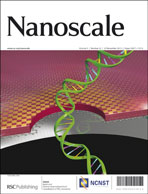Intravenous hemostats: challenges in translation to patients
Abstract
Excessive bleeding and the resulting complications are a leading killer of young people globally. There are many successful methods to halt bleeding in the extremities, including compression, tourniquets, and dressings. However, current treatments for internal hemorrhage (including from head or truncal injuries), termed non-compressible bleeding, are inadequate. For these non-compressible injuries, blood transfusions are the current treatment standard. However, they must be refrigerated, may potentially transfer disease, and are of limited supply. In addition, time is of the essence for halting hemorrhage, since more than a third of civilian deaths due to hemorrhage from trauma occur before the patient even reaches the hospital. As a result, particles that can cross-link activated platelets through the glycoprotein IIb/IIIa receptor expressed on activated platelets are being investigated as an alternative treatment for non-compressible bleeding. Ideally, these particles would interact specifically with platelets to stabilize the platelet plug. Initial designs used biologically derived microparticles with red blood cell fragment or albumin cores decorated with RGD or fibrinogen, which bind to GPIIb/IIIa. More recently there has been research into the use of fully synthetic nanoparticles with liposomal or polymer cores that crosslink platelets through a targeting peptide bound to the surface. Some of the challenges for the development of these particles include appropriate sizing to prevent blocking the capillaries of the lungs, immune system evasion to prevent strong reactions and increase circulation time, and storage and resuspension so that first responders can easily use the particles. In addition, the effectiveness of the variety of animal bleeding models in predicting outcomes must be examined before test results can be fully understood. Progress has been made in the development of particles to combat hemorrhage, but issues of immune sensitivity and storage must be resolved before these types of particles can be translated for human use.


 Please wait while we load your content...
Please wait while we load your content...